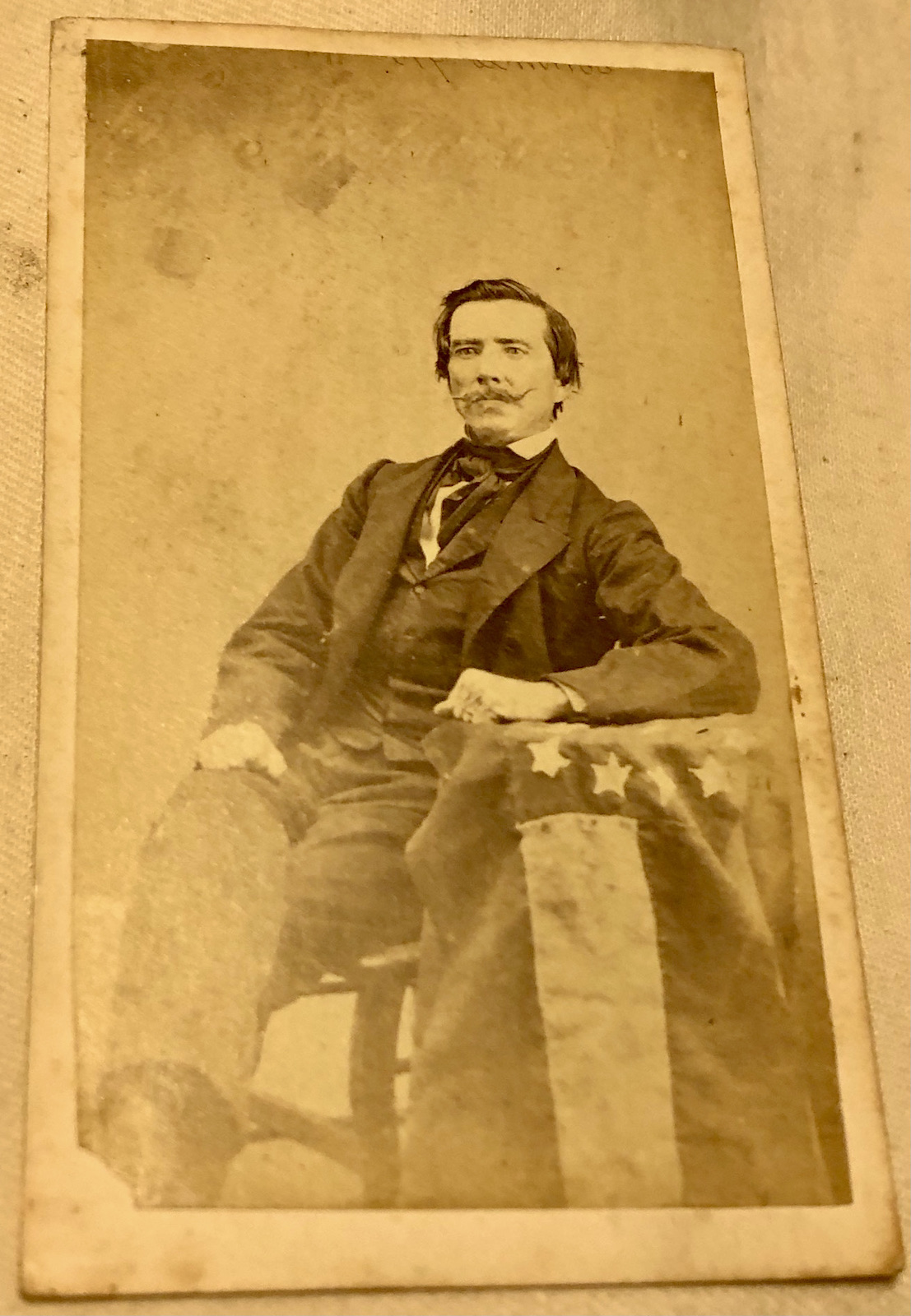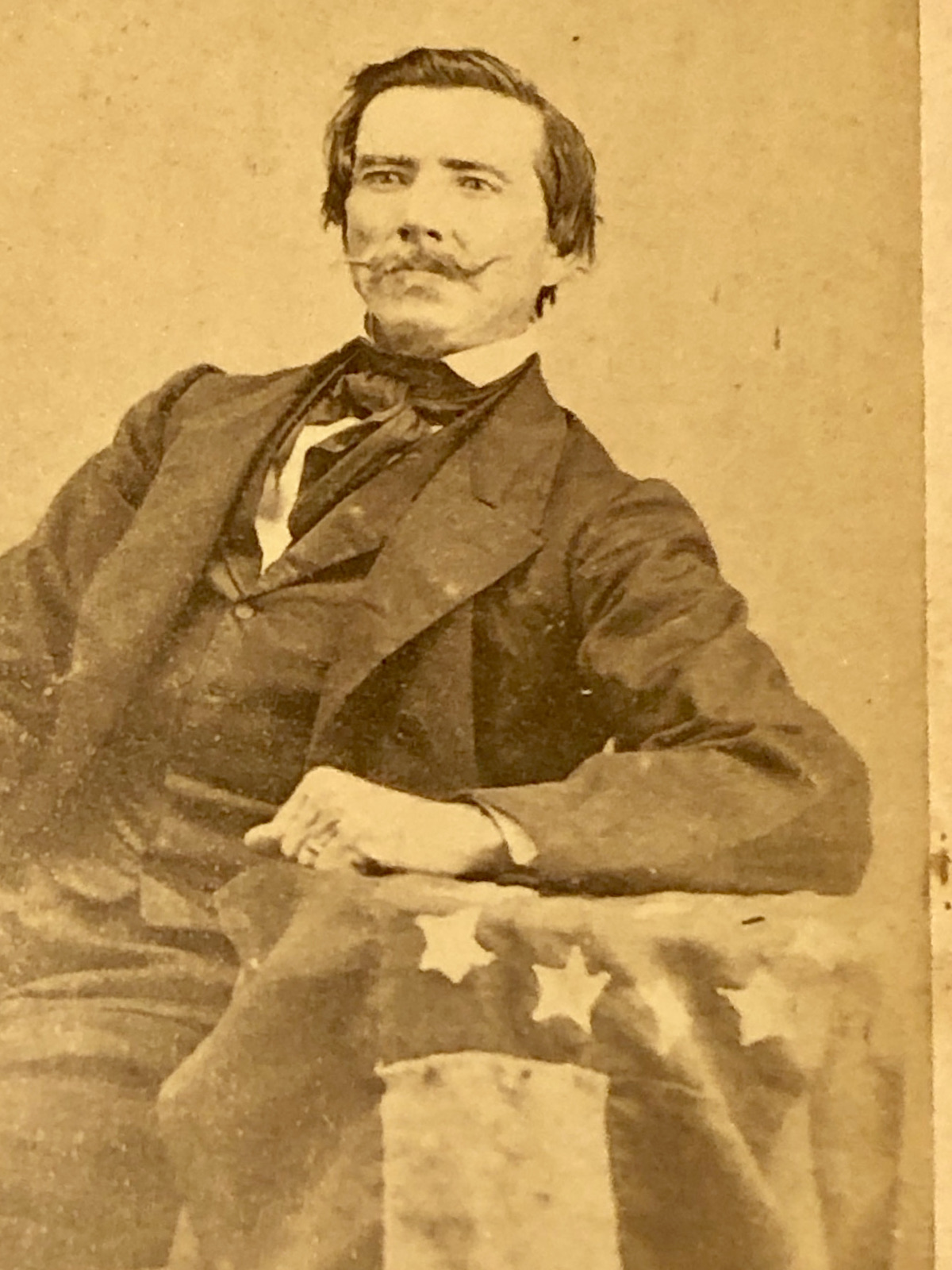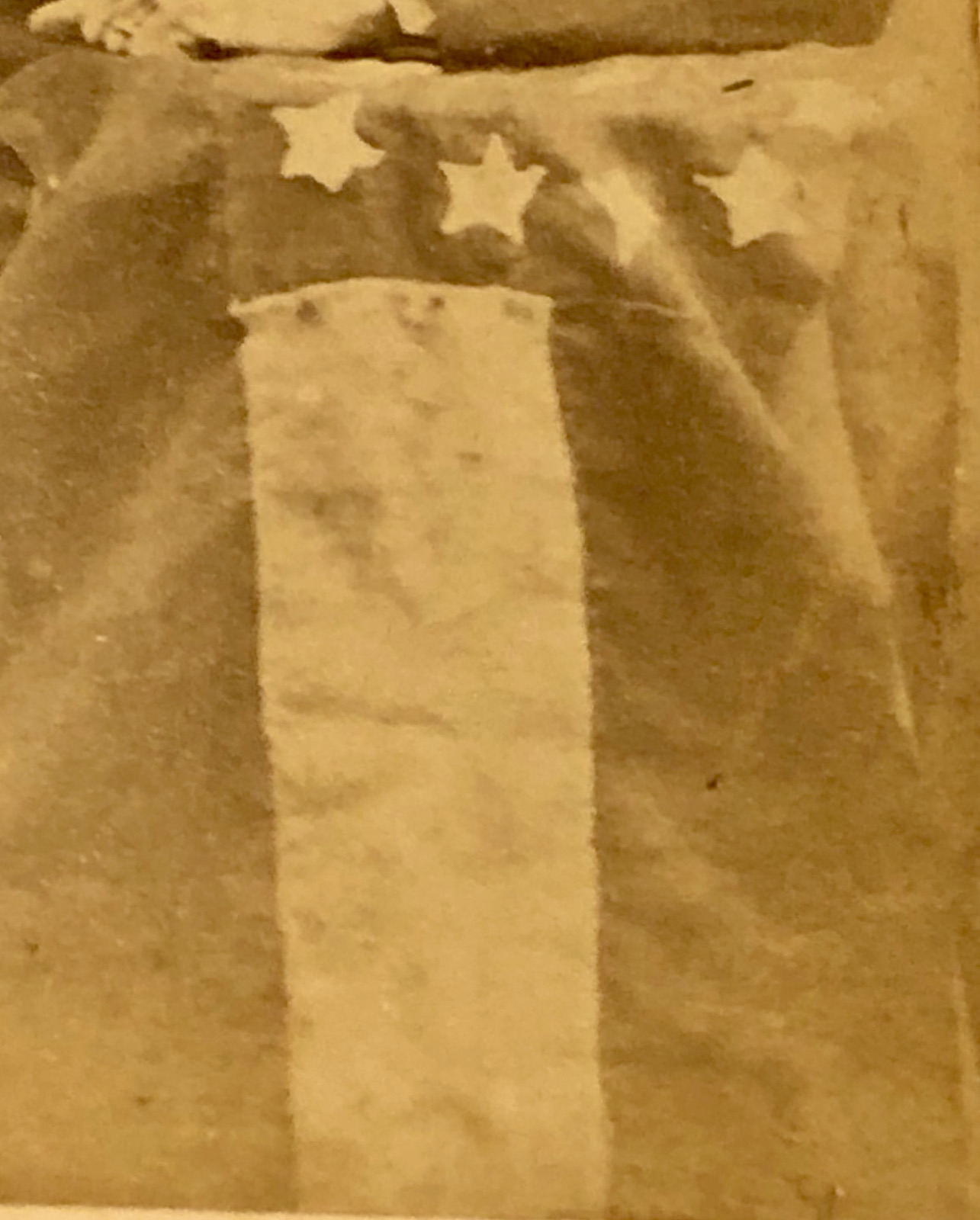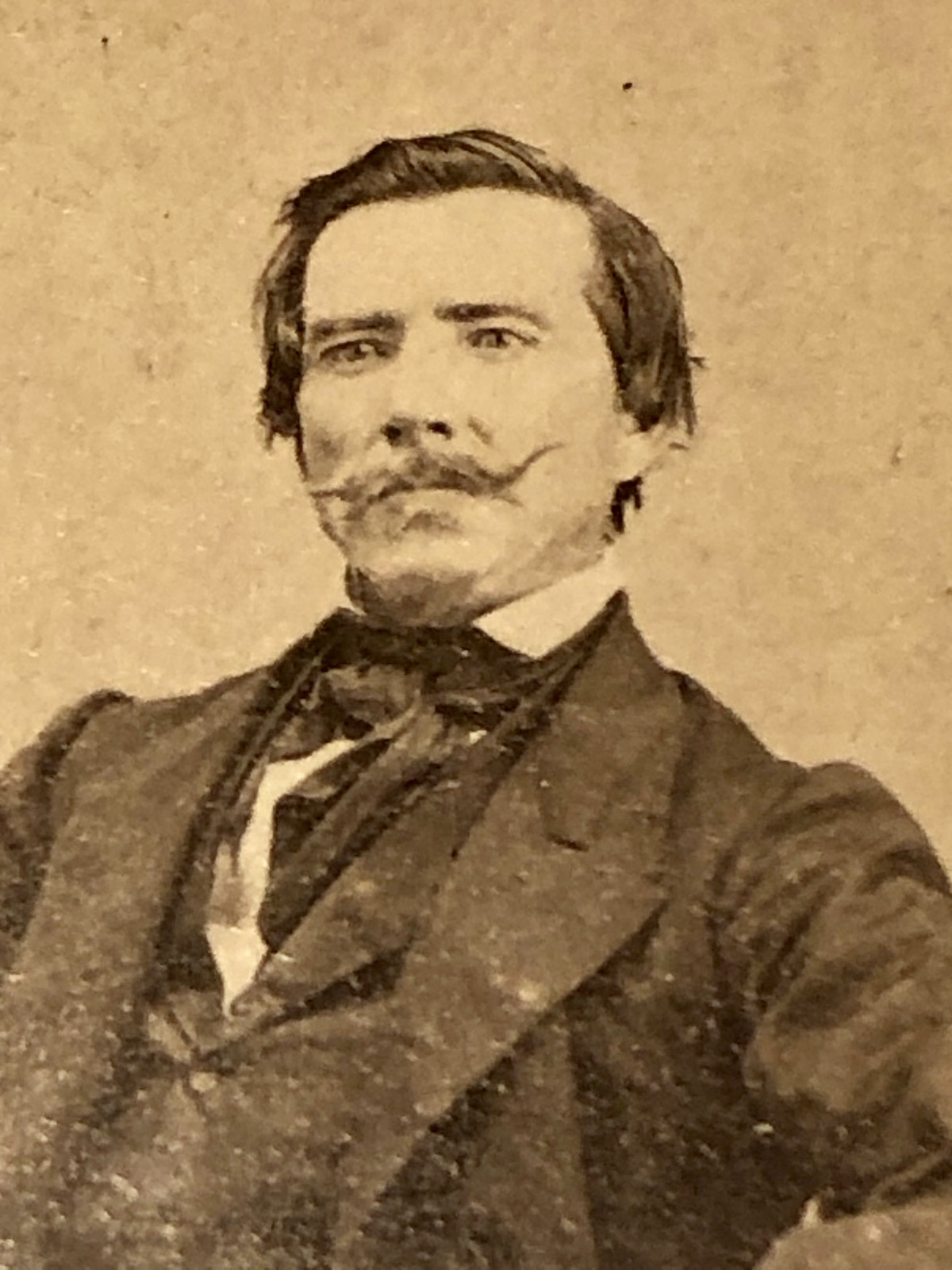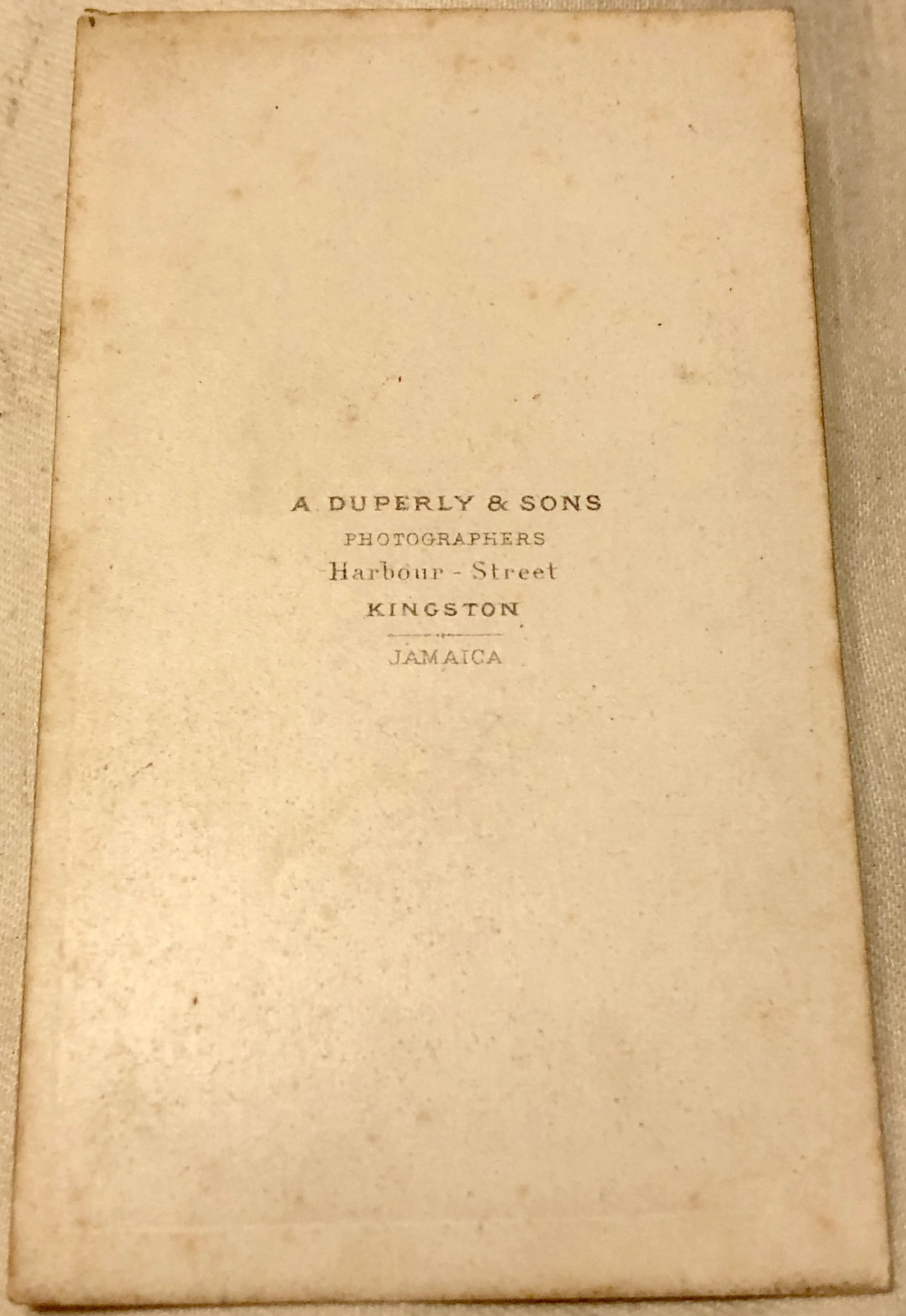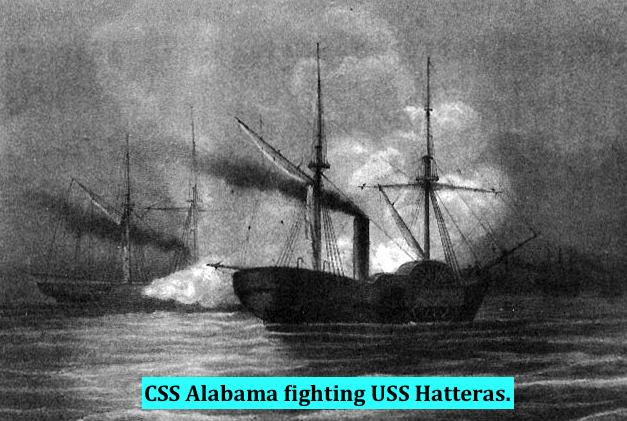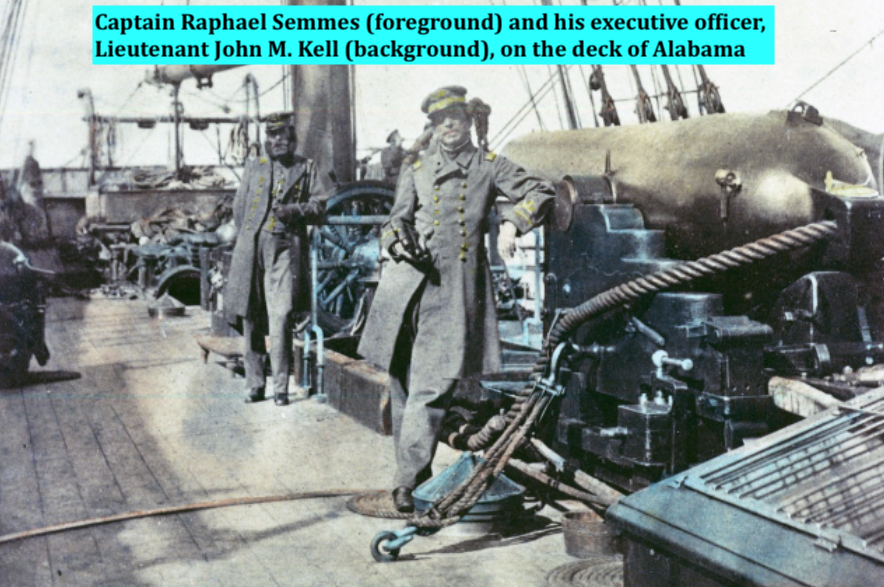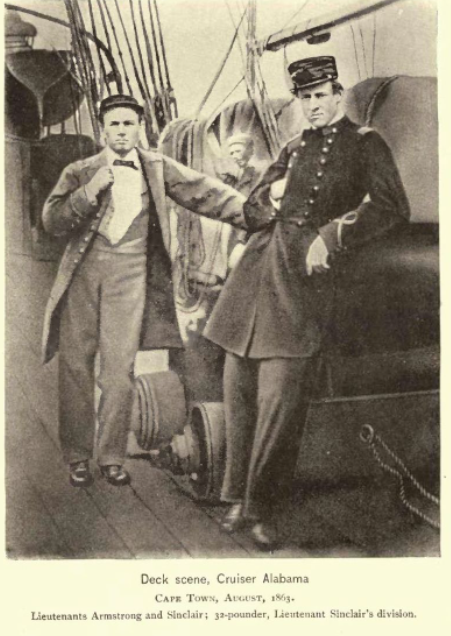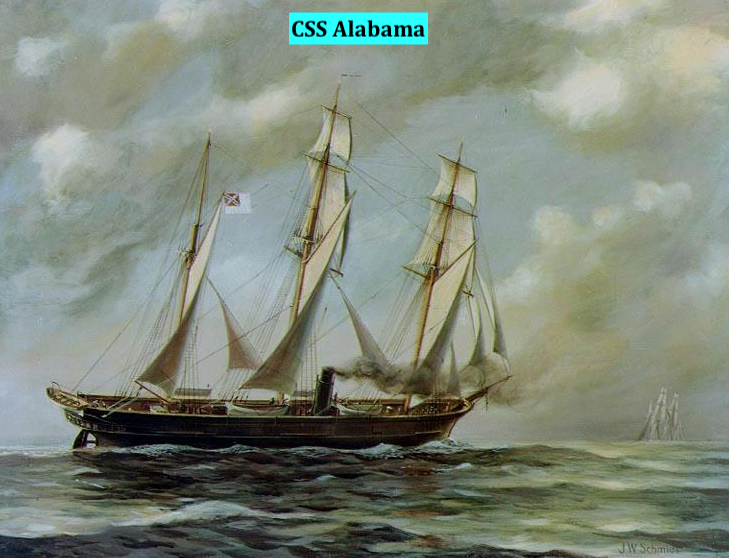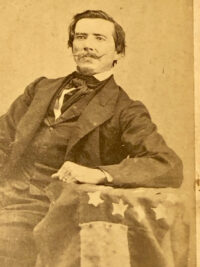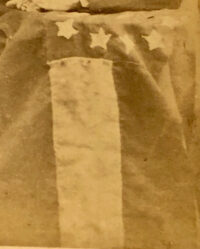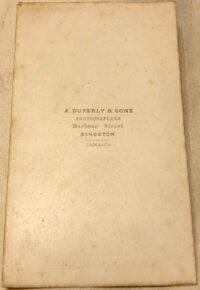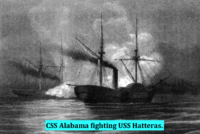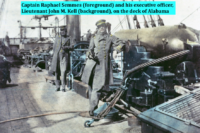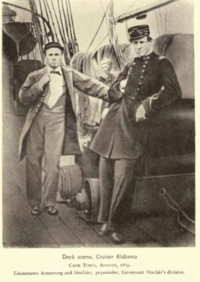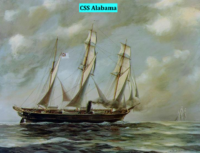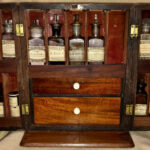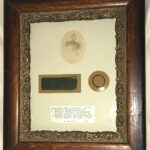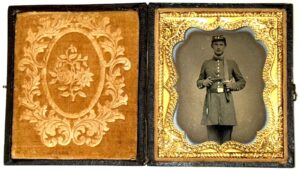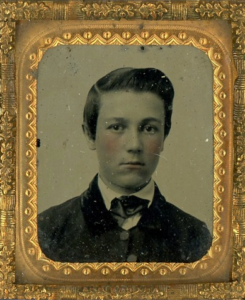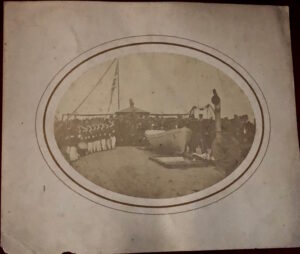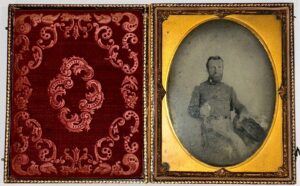1863 CDV of Captain Raphael Semmes, Confederate Navy Captain of the Famed CSS Alabama
SOLD
1863 CDV of Captain Raphael Semmes, Confederate Navy Captain of the Famed CSS Alabama – Three views of Captain Semmes were taken during this sitting; the images were taken, in all likelihood, on January 21, 1863, when the Alabama was in Port Royal in Kingston,, Jamaica, shortly after its January 11 engagement with the USS Hatteras. A rakish Semmes is shown with his arm draped over a Confederate 1st National Flag. The Alabama had sailed into Kingston to undergo some minor repairs, as well as take on more coal and debark Union prisoners. On January 25, 1863, the Alabama weighed anchor and shipped out for the Brazilian Coast to continue on her path of raiding. This rare CDV, which remains in excellent condition, has the following back mark:
“A DUPERLY & SONS
PHOTOGRAPHERS
Harbour Street
KINGSTON
JAMAICA”
Adolphe Duperly (1801–1865) was a French engraver, lithographer and printer who settled in Kingston, Jamaica, and who produced daguerreotypes and then founded a photography business.
Duperly was born in Paris, but was in Jamaica in the 1830s and produced a lithograph of the 1831 Baptist War and the emancipation celebrations in Kingston in 1838. He also provided a pictorial chronicle of African-Caribbean people in the 1830s. During the 1840s he published a collection of daguerreotypes of Jamaica.
He established Adolphe Duperly and Sons, which became the most successful photography business in Jamaica. The company was continued after his death by his son, Armond, and grandson Théophile. The companies original premises was destroyed by fire in 1907. From 1909 their studio was 85 King Street, Kingston.
CSS Alabama‘s Gulf of Mexico Expeditionary Raid
CSS Alabama‘s Gulf of Mexico Expeditionary Raid commenced shortly after the Confederate States Navy ship CSS Alabama left Bermuda and the Atlantic coast and cruised south toward the island of Dominica in the Caribbean Sea near the Gulf of Mexico. The raid lasted from about the middle of November 1862 to the end of January 1863.
The primary area of operation during this expeditionary raid, was the southern seaboard of the United States starting from Dominica then ranging up along Cuba and to Galveston, Texas before finally heading south again toward Jamaica.
Raid overview
CSS Alabama worked its way down the east coast of Florida during the month of November to Martinique to rendezvous with her supply vessel, CSS Agrippina, and ran into USS San Jacinto, narrowly escaping the Union warship. CSS Alabama then made her way to Texas to help defend the state from invasion from General Banks Expedition, and fought USS Hatteras in the action off Galveston Light naval battle, before escaping to the South Atlantic.
From this raiding area off the coast of New England, CSS Alabama made her way into the Caribbean Sea and the Gulf of Mexico to continue her unhindered wrecking of enemy commerce along the North American coastline.
Raid bounty
| CSS Alabama‘s Gulf of Mexico Expeditionary Raid | ||||
| Date | Ship name | Ship type | Location | Disposition of prize |
| November 30, 1862 | Parker Cooke | Merchant | Near Semana Bay, Dominican Republic | Burned 30 Nov 1862 |
| December 5, 1862 | Mina | ? | Released on $15,000 ransom bond due to neutral English Cargo | |
| December 7, 1862 | Ariel | Merchant | Caribbean Sea | Released on $261,000 bond 9 Dec 1862 |
| January 11, 1863 | USS Hatteras | U.S. Navy | Near Galveston, Texas | Sunk by firefight 11 Jan 1863 |
| January 27, 1863 | Chastelaine | Brig | Near Jamaica | Burned 27 Jan 1863 |
| January 29, 1863 | Golden Rule | ? | Near Jamaica | Burned 29 Jan 1863 |
| February 3, 1863 | Palmetto | ? | 27d 18′ N; 6d 16′ W | Burned 3 Feb 1863 |

